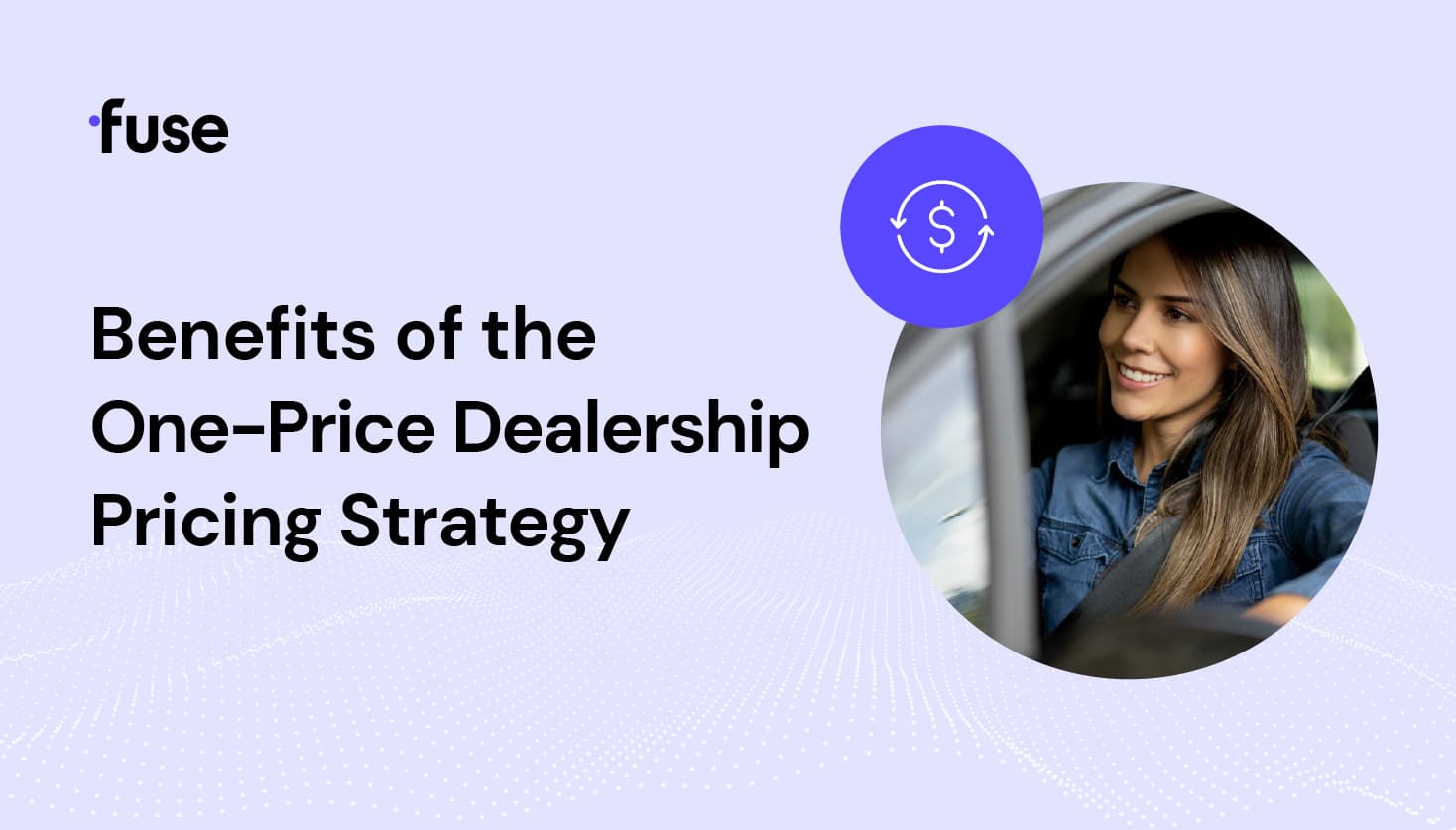Thursday, September 23rd at 11:00 AM ET
Nulla ut nisl a tellus pretium efficitur

By: Tom Ryan
9 minute read
When buying a new vehicle, consumers are often left wondering whether they got the best deal. Today’s car buyers want a streamlined, transparent shopping experience without having to haggle over price.
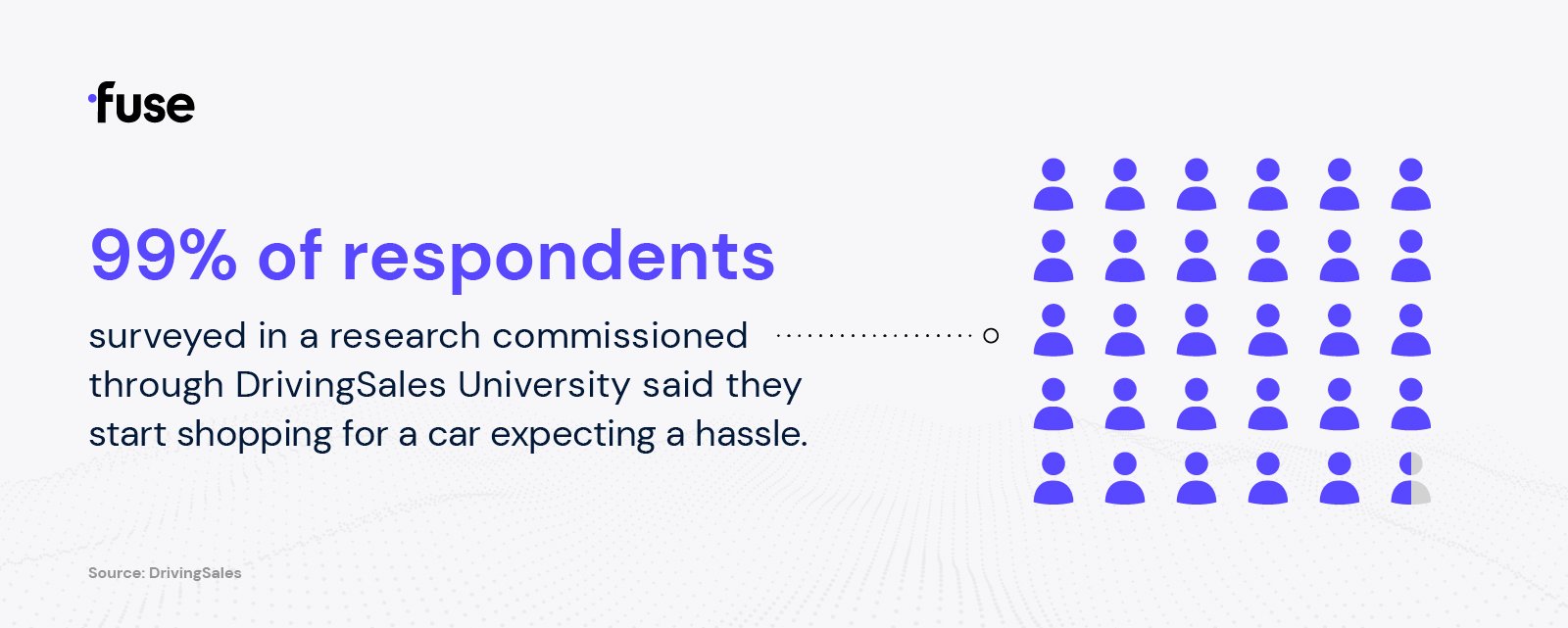
Dealerships that adopt a one-price sales model can better appeal to car buyers who prefer a hassle-free experience and want more transparency with pricing.
This article takes a closer look at the one-price model and how it benefits buyers, dealers, and dealership employees alike.
The traditional car dealership business model leaves some customers getting better deals than others. Tough negotiators typically pay less, while more socially reserved shoppers end up paying more. The one-price sales model eliminates this frustration for all involved parties because the car dealership sets the price of the car, not the customer.
.gif?width=400&name=Fuse-Blog-Dealership-Pricing-Strategy-Understanding-the-One-Price-Model-IMAGES-2-(900x900-selective50colors-diffusiondither40-lossy30-39frames-transpoff-notranspdither).gif)
Also referred to as "no-haggle," "upfront," or "value" pricing, the one-price car dealership model requires that a vehicle is sold at a set price that’s non-negotiable. This means that one-price car dealerships negotiate the lowest price they'd sell for before the customer even comes in.
One-price dealerships market this pricing strategy to appeal to customers who are weary of the traditional car-buying process. This approach especially resonates with younger generations like Gen Z. According to Bob Lanham, Head of Automotive Retail for Meta, “We now have a generation that's willing to pay more for a vehicle, product, or service because experience to them is more valuable than the price of the car."
The digitalization of the retail industry at large has accelerated many car dealerships’ decisions to adopt one-price selling. The growth of online shopping has resulted in consumers who are now accustomed to having detailed product and pricing information at their fingertips.
Powerhouses like Amazon and Progressive Insurance have done their fair share of digital disruption to push shoppers toward a “the price you see is the price you get” mindset, setting the stage for higher consumer expectations around price transparency.
The good news is that one-price selling and the right auto dealer finance software can dramatically reduce price-related friction during the car-buying process.
Relative "newcomers" to the automotive market such as Carvana, Tesla, Rivian, and Lucid are bringing fresh ideas to how dealers sell cars. Carvana, for example, aimed to disrupt the market by delivering cars directly to consumers. These newcomer competitors all offer a mostly digital shopping experience and a one-price model.
Carmax, the largest retailer of cars in America, launched in 1993 with a one-price model. The then market disruptor has kept its one-price sales strategy ever since, which has proven successful for the brand. During the fourth quarter of 2021, Carmax sold 343,413 vehicles through its combined retail and wholesale channels.
Traditional dealers need to adapt more customer-friendly business models to compete in today's highly saturated and competitive retail automotive market.
>> Download the Guide - Driving Dealership Customer Satisfaction and Profits with the Modern Retail Approach
Much like an Apple store is a one-stop shop for consumers, so is a single point of contact at a car dealership. In fact, many one-price dealerships have also transitioned to a single-point-of-contact (SPOC) sales process.
This strategy goes hand-in-hand with the one-price model to create a seamless customer experience. A key advantage of SPOC selling is efficiency due to only one individual managing the entire transaction — from vehicle selection to test drive, financing, closing, and delivery.
Dealers that take to the SPOC sales process do so because it creates a virtuous circle. It's more efficient, less costly, and leaves customers and employees more satisfied.
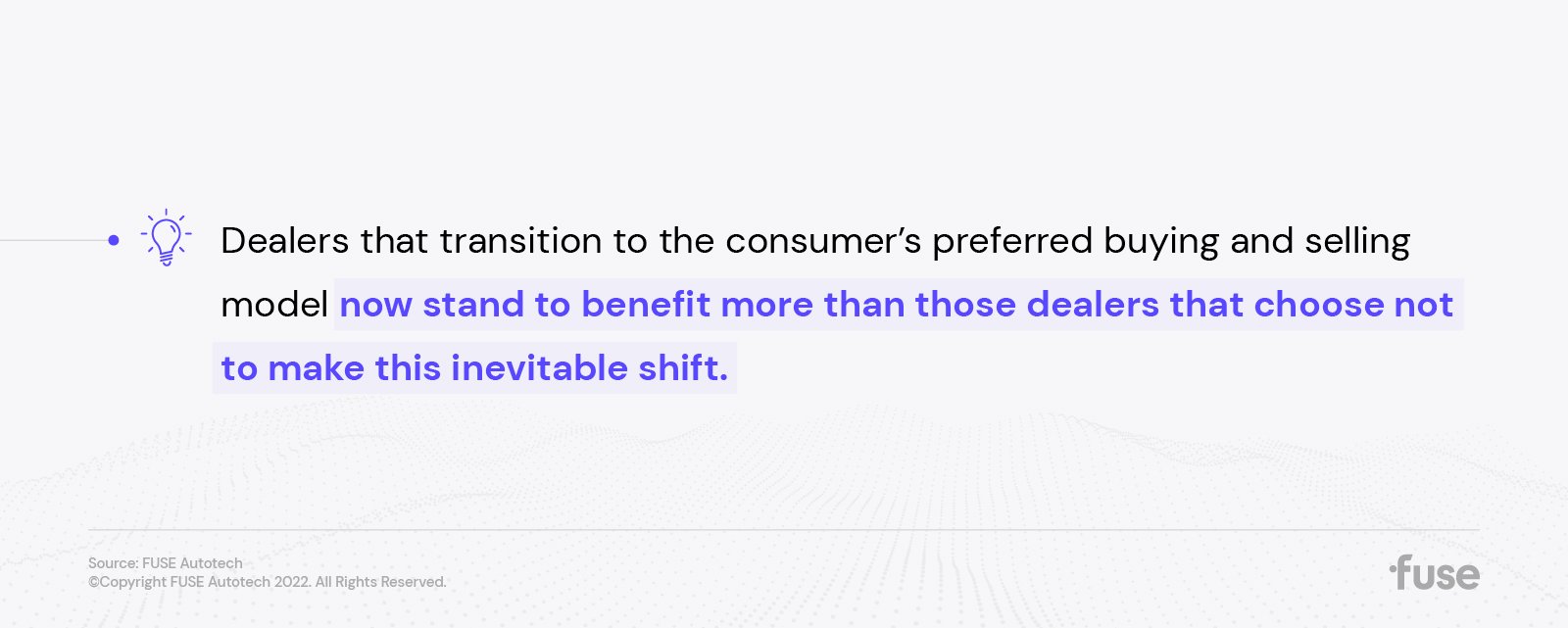
Some dealers are hesitant to fix a process they feel "isn't broken," especially when the last couple of years have proven incredibly profitable. However, dealers that transition to the consumer’s preferred buying and selling model now stand to benefit more than those dealers that choose not to make this inevitable shift.
The following questions and concerns are frequently voiced by dealers considering adoption of the one-price model:
When the one-price model is properly explained upfront, rarely is $100 the issue. As with any sales process, if you shortcut the beginning and move too quickly to closing, trouble ensues.
Sure, this is a risk — but it’s a risk that already exists with shoppers who visit your store, negotiate a price, and still insist on shopping because trust was not built. Plus, by leveraging dealership marketing and pricing software, like Fuse Dynamic Payments, that scans available inventory, financing rates, and OEM incentives each day, you can rest assured you’re always offering the most competitive price.
Dealerships competing on customer experience and price transparency should tread carefully here. One price implies no haggling, and that implication extends to trade-in values. Rather than using under allowances for price negotiations, use them for what they were intended for — to recoup reconditioning expenses.
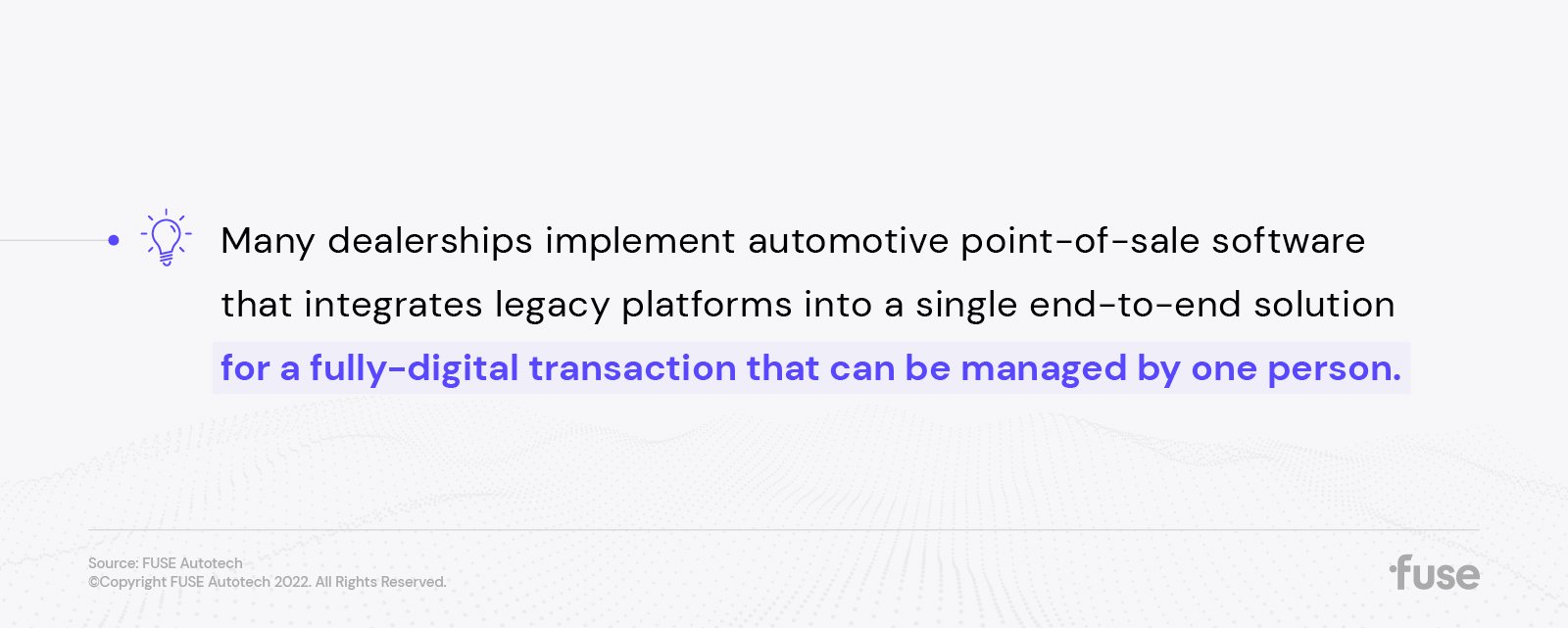
Investing in training and development is one of the top ways to ensure your staff succeeds in adopting the one-price sales model. Along with ongoing training, many dealerships implement automotive point-of-sale software that integrates legacy platforms into a single end-to-end solution for a fully-digital transaction that can be managed by one person.
In reality, a one-price sales model can attract quality employees who otherwise might not consider a career in retail car sales because of the traditional, negotiation-based sales process.
A J-curve is a trendline used to depict an initial loss followed by a significant gain to a level exceeding the starting point. It’s true that significant change (especially to a dealership’s pricing strategy and sales process) requires a significant investment (of time, money, and effort) to implement. However, as the saying goes, the juice is in fact worth the squeeze.
Take our friends at Walser Automotive Group for example. The significant change they invested in helped them a nearly 5 percent increase in market share over twenty-four months with a modern business model featuring one-price selling, a single point of contact, data-driven marketing, and the Fuse finance management system.
>> Sign Up for Email Updates - Get Great Content Like This Delivered Right to Your Inbox
As previously stated, car shoppers love the one-price sales model. Here are a few reasons why:
The car-buying process should be a happy one. Customers can walk through a showroom and decide to buy a car based on its merits, not on a salesperson's tactics. The one-price model makes the transaction more fair and balanced, so everyone gets the best price and outcome.
When dealerships set a competitive price from the start, customers know they won't have to do the uncomfortable price showdown at the dealership. That means they get the keys to their new vehicle sooner. No one wants to spend hours going back and forth on pricing or standing around waiting for a salesperson while they go to speak with their manager.
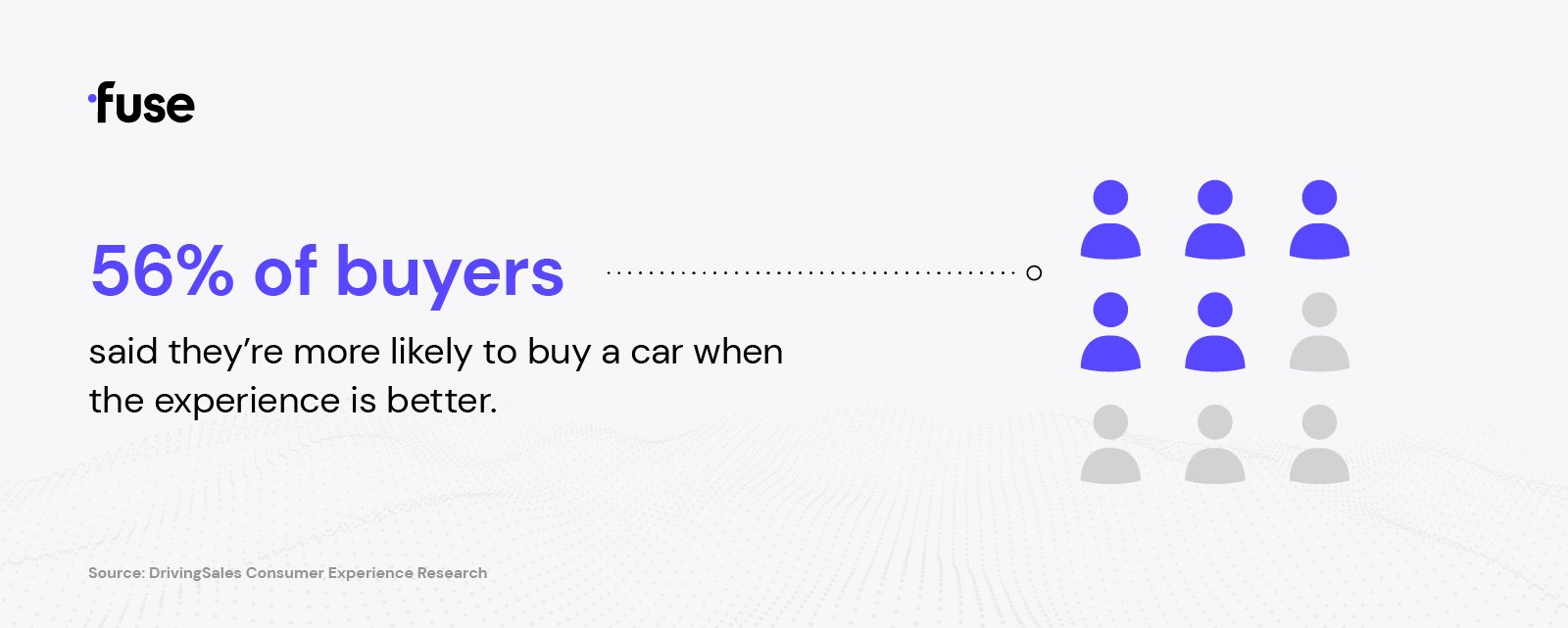
While some sales professionals thrive on the thrill of negotiating, many more prefer to focus on being a trusted advisor while delivering top-notch customer service. Here are some key ways a one-price sales model benefits employees:
Good negotiating skills are hard to come by. They can be taught, but more often than not, are innate. You either have them — or you don’t. Poor negotiating skills can cause customers to walk. Good negotiating can leave customers wondering if they were taken for a ride.
The solution? One-price selling.
Offering fair, honest pricing for everyone feels like the right thing to do. It aligns with the generational values of Gen Zers and Millennials. Salespeople can become more involved in the overall level of customer experience when they're less focused on landing the highest price.
The faster salespeople can close a deal, the sooner they can move on to the next sale. When the traditional, multi-hours-long car buying process can be completed in as little as one hour, that’s a big deal. As the saying goes, "time is money."
Last but certainly not least, let's talk about dealers. Despite reluctance amongst some dealers, the one-price sales model offers multiple benefits for dealers themselves. Here are a few:
Happy customers buy more cars and refer more people to do the same.
A differentiated brand is measured by its ability to sell at a premium price, like Apple or Gucci. When the price is set, dealers can compete on other factors such as customer experience.
Offering one price gives dealers more control. It provides greater predictability during unpredictable sales cycles.
One-price dealerships are able to deliver the kinds of elevated customer experiences that non-automotive retailers offer.
With no haggling and a more streamlined process, salespeople can close sales more quickly.
It might seem counterintuitive, but setting one price can boost sales. Matthews Auto, a Kia dealership in Vestal, New York, for example, has increased its sales by close to 40% since becoming a one-price dealership. Many dealerships report similar increases.
Many employees prefer the one-price model. It eliminates the stress of having to “work” a customer to get the most revenue on the deal, and it paints them in a more favorable light with customers.
Adopting the one-price model is one of those rare opportunities where doing so benefits car buyers, car dealership employees, and car dealers. The question is — what are you waiting for?
Revolutionize your car pricing strategy with help from Fuse. Contact us today for support in transitioning your dealership to a one-price model.
>> See How Fuse Transact Works - Watch the Video Now
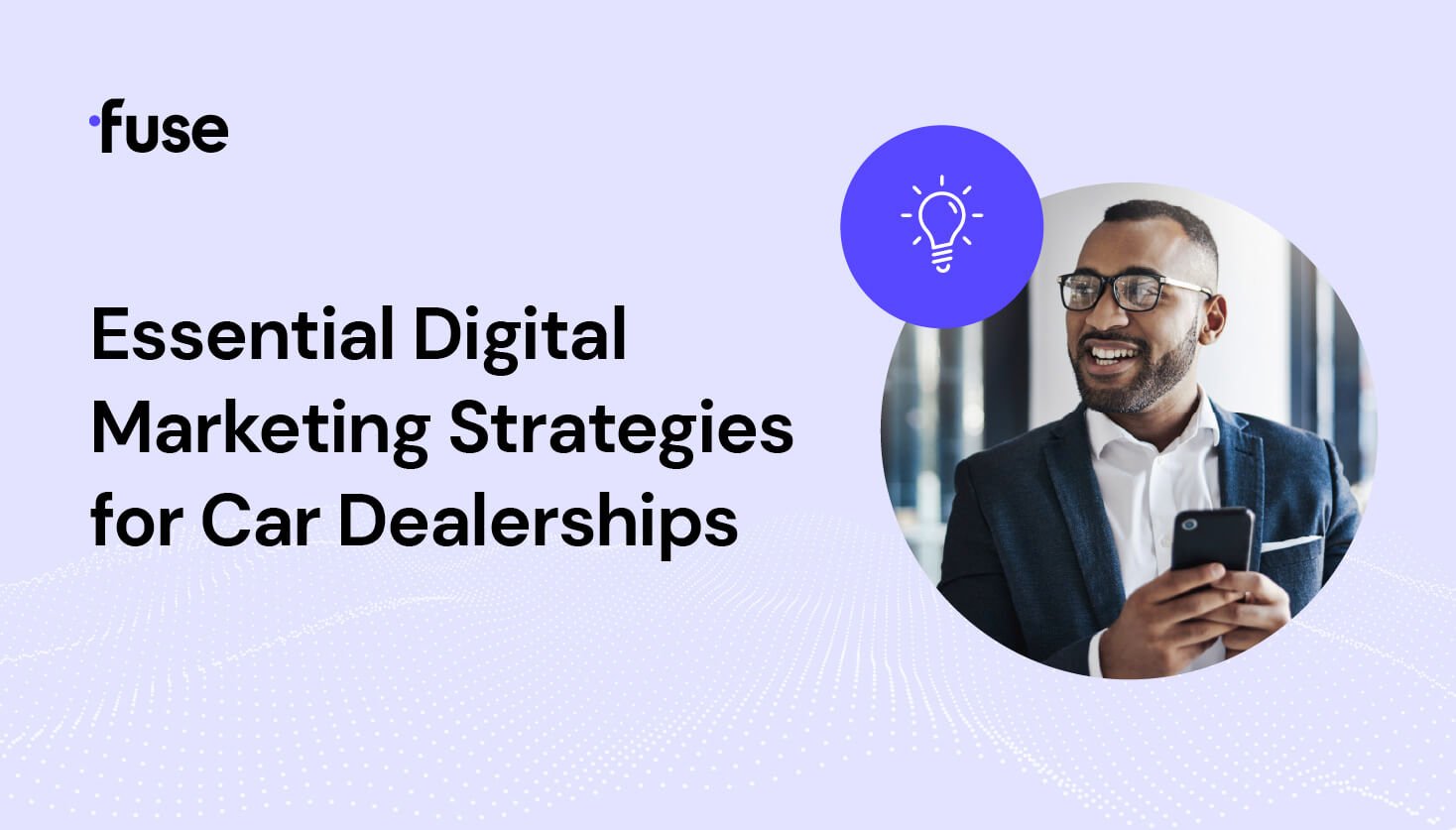
The times, they are a-changin' — especially when it comes to dealership marketing. Retail automotive marketing today is both fast-paced and cutthroat. The good news? By implementing the digital...
News and Insights
13 min read
